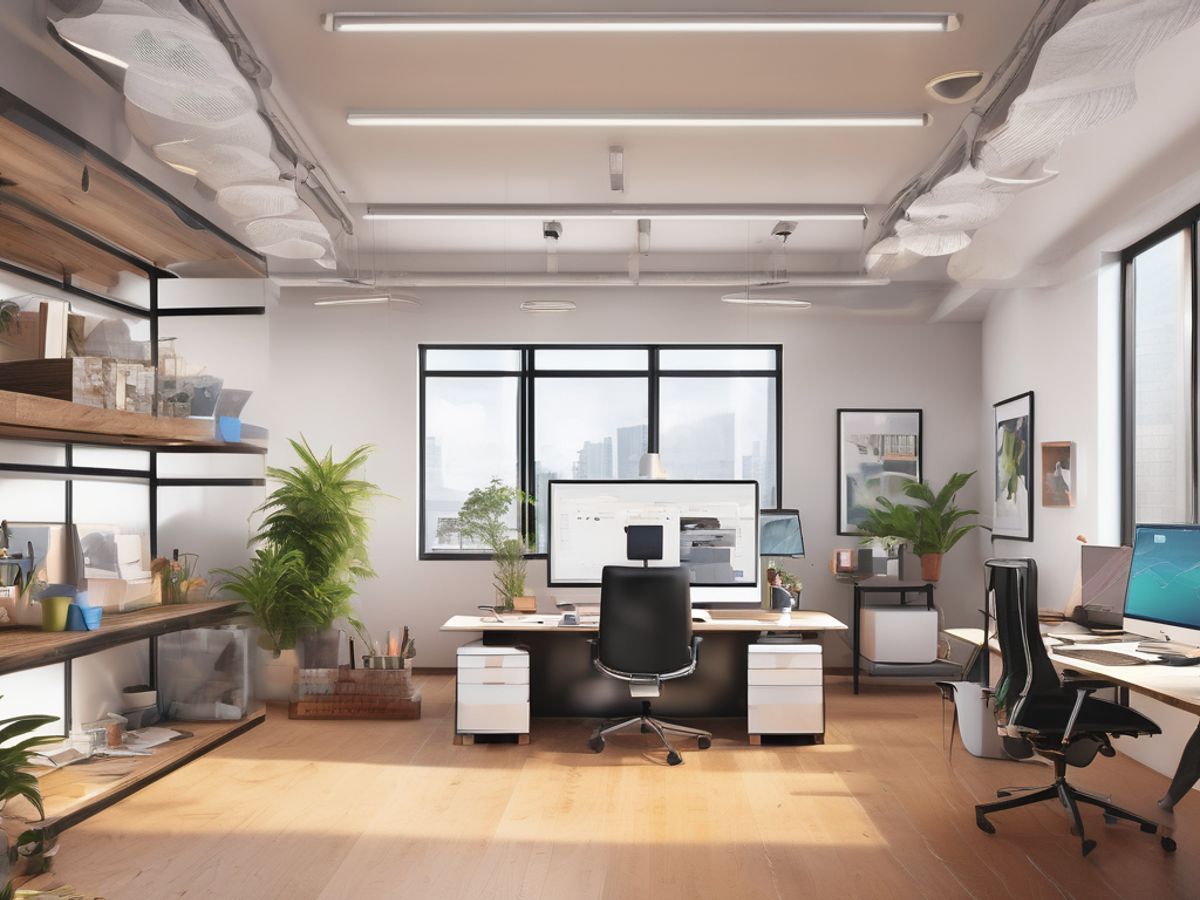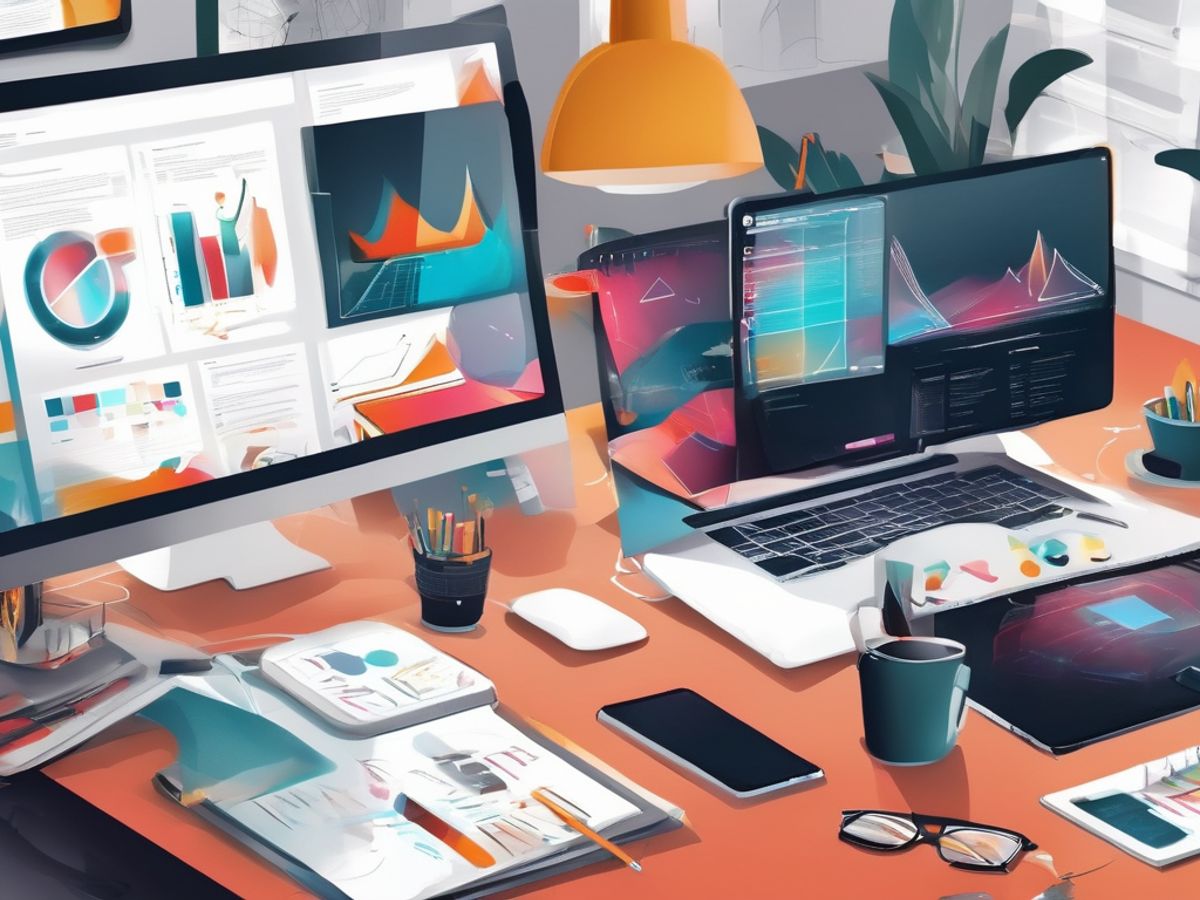As the digital landscape continues to evolve, staying abreast of the latest website concept trends is crucial for designers, developers, and businesses aiming to maintain relevance and effectiveness. This article delves into the most prominent trends shaping the future of website design, offering insights into how these innovations can enhance user engagement, aesthetic appeal, and overall functionality.
Key Takeaways
- The integration of AI for personalized user experiences is revolutionizing how websites interact with visitors.
- Interactive elements and voice user interfaces are becoming essential in enhancing user engagement and accessibility.
- Visual trends like minimalism, bold typography, and dark mode are defining modern aesthetics while ensuring usability.
- Sustainable web design and mobile-first approaches are critical in addressing environmental concerns and the dominance of mobile traffic.
- Augmented and virtual reality technologies are setting new standards for immersive online experiences.
Revolutionizing User Experience
Personalization through AI
We are witnessing a transformative era where AI-driven personalization is becoming a cornerstone of user experience. By leveraging user data, AI technologies can tailor content, recommendations, and interfaces to individual preferences, enhancing user engagement and satisfaction.
Interactive Elements
Interactive elements are crucial for engaging users and keeping them immersed in the website. From hover effects to real-time data visualizations, these elements make the user journey more dynamic and enjoyable.
Voice User Interface (VUI)
Voice User Interfaces are reshaping how users interact with devices. By integrating VUI, we make our platforms more accessible and streamline user interactions, especially for tasks that benefit from hands-free operation.
Visual Aesthetics in Modern Web Design
Minimalism and Bold Typography
We embrace the trend of minimalism paired with bold typography to create clean, impactful websites. This approach not only enhances readability but also ensures that the core message is front and center. Bold typography serves as a focal point, drawing attention to key areas and improving user engagement.
Dark Mode and Color Psychology
We’ve adopted dark mode options in our designs, recognizing its benefits in reducing eye strain and saving device battery life. The strategic use of color psychology can evoke specific emotions and actions from users, making the website not only visually appealing but also psychologically compelling.
Advanced Animations and Micro-interactions
We incorporate advanced animations and micro-interactions to guide users through their digital journey subtly and effectively. These elements, when used judiciously, can greatly enhance the user experience without overwhelming the senses. For instance, hover effects and loading animations can inform and delight users, making their interactions with the website more enjoyable and intuitive.
Accessibility and Inclusivity
ADA Compliance
We recognize the importance of adhering to the Americans with Disabilities Act (ADA) standards to ensure our websites are accessible to all users, regardless of their abilities. By integrating features like screen reader support, keyboard navigation, and closed captions, we strive to remove barriers that can prevent interaction with, or access to websites by people with disabilities.
Inclusive Design Practices
In our design process, we prioritize inclusive design practices that cater to a diverse user base. This involves creating designs that are usable and effective for people with a wide range of physical and cognitive abilities. We consider various user needs from the outset, which not only enhances the user experience but also fosters a sense of belonging and respect.
Multilingual Website Support
To embrace global inclusivity, we provide multilingual support on our websites, allowing users from different linguistic backgrounds to access information in their preferred language. This approach not only broadens our reach but also enhances user engagement by making our content more relatable and easier to understand.
Sustainable Web Design
As we look towards a more sustainable future, we are committed to integrating eco-friendly practices into our web design processes. This commitment not only reflects our dedication to environmental responsibility but also aligns with the growing demand for greener digital solutions.
Eco-friendly Hosting Solutions
We explore various hosting options that prioritize renewable energy sources, ensuring that our websites are powered in an environmentally responsible manner. By choosing providers who use solar or wind energy, we significantly reduce the carbon footprint associated with our digital presence.
Optimized Asset Delivery
Efficient asset management is crucial for reducing the load times and bandwidth usage of our websites. We employ techniques like image compression, proper caching, and lean coding practices to ensure that our websites are not only fast but also have a minimal environmental impact.
Reducing Carbon Footprint
We strive to minimize the overall carbon footprint of our web projects. This involves selecting technology and practices that reduce energy consumption and promote sustainability. From the development phase to the live site, every step is taken with a conscious effort to be as eco-friendly as possible.
Looking ahead, emerging technologies such as artificial intelligence, machine learning, and blockchain are poised to shape the future of sustainable web design.
The Rise of Mobile-First Design
As we navigate the evolving landscape of digital design, we’ve embraced the mobile-first approach as a cornerstone of our strategy. This approach not only prioritizes the mobile user experience but also ensures that our designs are effective across all devices.
Responsive vs. Adaptive Strategies
In our journey, we’ve explored both responsive and adaptive design strategies. Responsive design fluidly changes based on the screen size, while adaptive design has fixed layout sizes. Choosing between these strategies depends on the specific needs of the project and the user demographics.
Mobile Speed Optimization
Speed is paramount in mobile design. We focus on optimizing every element to ensure that mobile users enjoy a seamless experience. This includes compressing images, leveraging browser caching, and minimizing code.
Gesture-Based Navigation
To enhance usability, we’ve integrated gesture-based navigation into our designs. This allows users to interact with our websites through intuitive gestures, making the experience more engaging and accessible.
Embracing a mobile-first design philosophy is essential for staying relevant in today’s digital landscape. It’s not just about adapting to smaller screens, but about rethinking how users interact with your digital content from the ground up.
Integrating Augmented and Virtual Reality
As we embrace the digital age, augmented reality (AR) and virtual reality (VR) are becoming integral to creating immersive web experiences. These technologies allow us to engage users in ways that were previously unimaginable, offering a new dimension of interaction and exploration.
AR for Interactive Shopping
AR technology transforms the online shopping experience by allowing customers to visualize products in their own space before making a purchase. This not only enhances user engagement but also significantly reduces return rates. For instance, furniture and home decor brands are increasingly adopting AR to help customers see how products would fit and look in their actual living spaces.
VR for Virtual Tours
VR takes the concept of virtual tours to the next level, providing a lifelike experience that can be pivotal for industries like real estate and tourism. Potential buyers or tourists can explore properties or destinations from the comfort of their homes, which is not only convenient but also time-saving and cost-effective.
Cross-Reality Experiences
The fusion of AR and VR, known as cross-reality, offers a seamless blend of real and virtual worlds, creating a hybrid environment where physical and digital elements coexist. This is particularly exciting for educational and training purposes, where such technologies can simulate real-life scenarios for better learning and understanding.
We are on the brink of a revolution in how we interact with the web, and AR and VR are at the forefront of this change.
The Role of Content Management Systems
In our journey to enhance digital experiences, we’ve observed a significant shift in the landscape of content management systems (CMS). The evolution from traditional CMS to more dynamic solutions like Headless CMS and API-First Design is reshaping how content is managed and delivered across platforms. This transformation is not just about technology but also about empowering content creators and developers to synchronize content seamlessly across multiple platforms, ensuring a consistent and engaging user experience.
Headless CMS
We’ve embraced the headless CMS architecture due to its flexibility in content delivery. This approach separates the backend content management from the frontend presentation layer, allowing developers to use their preferred tools and frameworks to create a bespoke user experience. The result is a more agile and scalable system that can handle the demands of modern digital landscapes.
API-First Design
Adopting an API-first design philosophy has been crucial. This method prioritizes the development of APIs, ensuring that all functionalities are accessible through well-defined programming interfaces. It supports a wide range of devices and channels, making it indispensable in today’s multi-experience digital environment.
Multi-platform Content Synchronization
To address the challenge of maintaining consistency across various platforms, we’ve implemented robust strategies for multi-platform content synchronization. This ensures that all content updates are reflected universally, enhancing the reliability and coherence of the digital experiences we create.
By focusing on these advanced CMS features, we are setting new standards in content management and delivery, aiming to provide superior digital experiences that meet the evolving needs of users and businesses alike.
In today’s digital age, the role of Content Management Systems (CMS) is pivotal in shaping the way we create, manage, and distribute content. A robust CMS not only streamlines your workflow but also enhances your digital presence, making it crucial for businesses aiming to thrive online. To learn more about how a CMS can transform your business, visit our website at Marco Mundo, where we specialize in tailoring digital solutions that fit your unique needs.
Conclusion
As we’ve explored the latest website concept trends, it’s clear that the future of web design is both exciting and dynamic. From immersive experiences to AI-driven personalization, the trends of 2024 are set to redefine how we interact with digital spaces. Designers and developers must stay ahead by embracing these innovations, ensuring that their websites not only look stunning but also offer unmatched user experiences. Whether you’re revamping an existing site or starting from scratch, keeping these trends in mind will help you create a compelling, future-proof digital presence.
Frequently Asked Questions
What are the latest trends in website design for 2024?
The latest trends include AI personalization, interactive 3D objects, VR & AR integration, system themes like dark/light modes, and experimental navigation for enhanced user engagement.
How can AI enhance user personalization on websites?
AI can analyze user data to deliver customized content, predict user behavior, and provide a more personalized browsing experience, improving engagement and satisfaction.
What is the significance of VR and AR in web design?
VR and AR can create immersive experiences that engage users more deeply by allowing them to interact with products or explore places virtually, enhancing the overall user experience.
Why is dark mode becoming popular in web design?
Dark mode helps in reducing eye strain, saving device battery life, and offering a modern aesthetic that is visually appealing and comfortable for users in low-light conditions.
What are the benefits of minimalism in web design?
Minimalism in web design helps in faster loading times, a cleaner interface that is easier to navigate, and a focus on essential content without overwhelming users, enhancing overall user experience.
How can web design contribute to a brand’s identity?
Effective web design can reflect a brand’s identity through consistent use of colors, typography, and layout that align with its values and message, making the brand memorable and recognizable to users.



